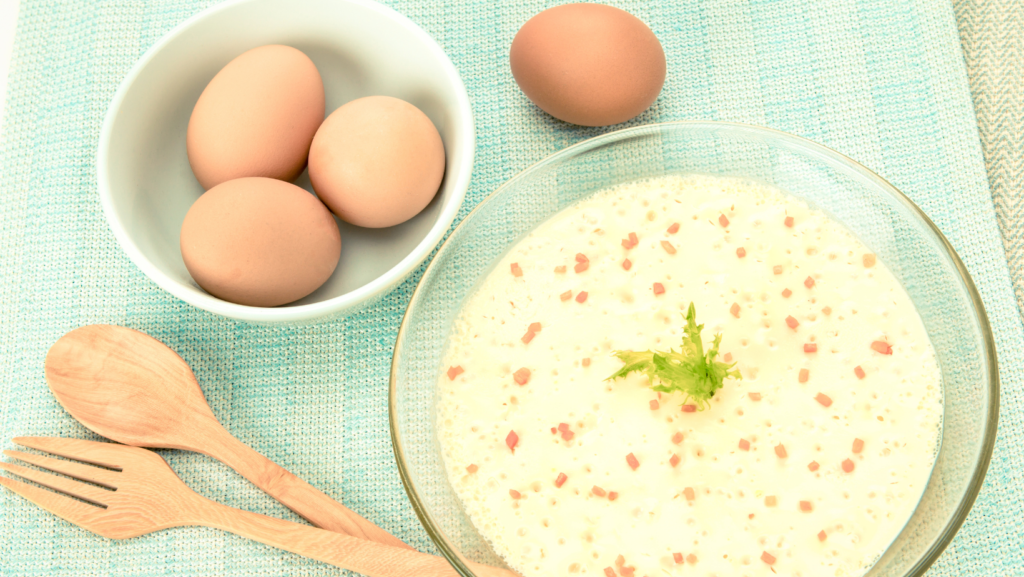Exercise Daily – have you recently gone through a wisdom tooth removal and wondering about how to reduce swelling after wisdom teeth removal? If so, then learn everything here about the recovery time and some tips.
The extraction of wisdom teeth is one of the most frequently performed dental procedures. It may take up to 2 weeks for a person to completely heal after having their wisdom teeth removed.
Taking appropriate care of a wound may assist a person in recovering as soon as possible from it.
What Are Wisdom Teeth and Why They Need Removal?
These are big teeth that emerge at the rear of the mouth and are known as wisdom teeth. The majority of people’s wisdom teeth grow between the ages of 17 and 25, on average.
Some individuals may not have any wisdom teeth grow at all throughout their lifetime. It is possible that wisdom teeth will not be able to migrate into the proper place because there is not enough space in the mouth.
It is possible that they will burst through the gums at an angle or that they may only come through partly. When this happens, the wisdom teeth are referred to as impacted wisdom teeth, and they may cause issues such as discomfort or infection.
The amount of time it takes to remove wisdom teeth is determined by the size of the tooth and the complexity of the surgery.
How to Reduce Swelling After Wisdom Teeth Removal?

When wisdom teeth are removed, the recovery time is determined by the method of extraction used. What happened with the tooth? Was it stuck in the jaw bone, or was the extraction straightforward?
As a consequence of the surgical trauma, there will be some post-operative swelling in each of these situations. Again, the severity of the swelling will be determined by the difficulty of the extraction procedure.
Most commonly, people usually use hot or cold compress after wisdom tooth extraction.
Wisdom Teeth Removal Swelling Day 2
The goal of the first 24 hours after wisdom teeth removal is to keep the amount of swelling to a bare minimum.
- In order to do this, you should apply ice packs to the region of your cheeks where the tooth was removed. As soon as the operation is completed, you may begin using ice packs to reduce swelling.
- To keep yourself cool, pick yourself a cold pack at the pharmacy, or a frozen bag of peas would suffice. Whatever source you choose, cover it in a dish towel to keep it from becoming dirty.
- Hold it firmly on the exterior of your face for 15 minutes, then remove it and leave it for another 15 minutes before repeating the process.
- Blood vessels in the surgical region will constrict as a result of the cold, decreasing the volume of fluid that is carried throughout the tissues and, as a result, reducing the amount of swelling in the area.
Keep in mind that you will be numb as a result of the anesthetic, so avoid falling asleep with the ice pack placed on your face.
Tooth Extraction Swelling After 3 Days
How to reduce swelling after wisdom teeth removal after 3 days is not a big deal.
It is impossible to completely avoid swelling with the cold compress, but it is possible to reduce it rapidly with the warm compress.
- You may start using a warm compress after 48 to 72 hours have passed, not sooner. This is when most people experience swelling at its most severe. Pay attention to what your dentist advises.
- Make use of a hot pack or a damp cloth to relieve the pain. It is preferable not to burn the swollen region but rather to warm it.
- It should be held against the swollen region every 20 minutes interval.
- The heat from the compress will encourage your blood vessels to widen, allowing them to transport the fluids that are causing the swelling away from the injured area.
If your swelling hasn’t gone down by the fourth day, you should consult with your dental professional.
Complications are conceivable, despite the fact that they are uncommon. In order to avoid further complications, contact your dentist as soon as you detect significant pain, pus, or a fever.
Wisdom Teeth Removal Recovery Tips

Wisdom teeth removal is a normal procedure; nevertheless, healing from the procedure will need some time and lots of rest on your part once the procedure is over.
It is common to feel pain, discomfort, and swelling throughout the recovery process, and it will take some time before things return to their previous state.
Fortunately, there are steps you may take to help yourself recover from oral surgery more quickly and with less discomfort.
Make A Plan Ahead of Time
The most basic step to deal with how to reduce swelling after wisdom teeth removal is to make a plan ahead of time.
Before your operation, begin making preparations for your recovery. Discuss your expectations with your dentist or surgeon, and ask as many questions as you need to about how you should anticipate feeling and what you can do to hasten your recovery.
Also, arrange a suitable time for the surgery to take place. You’ll need to take a few days off afterward to recuperate, so make your appointment when you have plenty of time to relax afterward.
Get Lots of Rest
Get lots of rest. Make arrangements for someone to pick you up and take you home. Neither driving nor using public transit is an option since you will be in no condition to do so.
Have plenty of rest for the first day or two after surgery; if you get adequate “downtime,” your long-term recovery will be much simpler.
In most instances, you will be able to return to work within a day, although complete recovery may take up to a week in certain cases. Whatever you do, avoid vigorous activity for a few days after the extraction to prevent problems at the site of the extraction.
It is also possible that pain relievers make it dangerous to do certain types of jobs (e.g., driving or operating heavy machinery). It is advisable to take time from work in order to prevent inflicting damage to yourself or others in the workplace.
Maintain An Elevated Position For Your Head
If you really want to know how to reduce swelling after wisdom teeth removal, then keep your head elevated.
Elevating your head alters the amount of blood and the tone of the blood vessels, which helps to accelerate the healing of wounds.
This also helps to decrease swelling in the surrounding region, which helps to alleviate your pain. Pillows may be used to position your body at a 45-degree angle, with the head and shoulders elevated over the heart to the greatest extent feasible.
Take Your Medicine As Prescribed
Always follow the dentist’s instructions for taking your pain medication. Make a note in your calendar or set a reminder on your phone to remind you to take the first dosage.
People often report that they are still feeling the effects of the anesthesia many hours after the surgery. To prevent experiencing the full impact of the pain, take your medication on time, even if you have to get up in the middle of the night to do so.
If you have any symptoms in addition to your prescription, you may want to consider using over-the-counter medicines to assist relieve some of the symptoms. Consult with your dentist about safe alternatives; do not self-medicate.
Stick To Soft Meals As Much As Possible
An essential part of recovery after a procedure such as wisdom teeth removal is maintaining a good diet at all times.
For a few days, stick to soft meals (such as smoothies, soups, and scrambled eggs) that are easier to chew while still providing nutritional value.
Eating soft foods also helps to prevent blood clots from dislodging and creating a “dry socket” at the site of the injury. Drink plenty of water, but avoid sucking on a straw since the sucking motion may cause the clots to release themselves.
Likewise, when you are able to chew again, avoid chewing towards the rear of the mouth where the gums are attempting to recover from the damage.
Soft meals will help you with how to reduce swelling after wisdom teeth removal.
Rinse Your Mouth Out With Water
Use a warm saline solution to gently rinse out your mouth the day after the surgery and three times a day while you are recovering (240 mL or 8 oz of warm water + 5 mL or 1 tsp salt).
Salt destroys bacteria in the mouth and assists in the prevention of germs in the sockets. It is also a natural pain reliever. Your dentist may also recommend that you use an antibacterial mouthwash to gently bathe the sockets in order to prevent dry sockets.
Keep the Bleeding Under Control
It is common to have bleeding after the surgery; you will be given a gauze to bite on to cease the flow. Bite down on the gauze for at least 30 minutes, maintaining constant pressure. This will help to stop the bleeding.
If required, replace the gauze with a new piece of medical tape. If the bleeding does not stop, bite on a wet caffeinated tea bag as a temporary solution.
Tea leaves include tannin, which helps to improve blood coagulation, and caffeine, which may help to increase circulation in the affected region.
Keep Cigarettes Away From Your Mouth
While the sores in the sockets are healing, it is important not to smoke. In addition to extending your pain, cigarette smoke delays the healing process.
Cigarette smoking may also dislodge the blood clots that have formed over the sockets, resulting in dry sockets.
Continue To Move Your Jaw
It is typical to have some stiffness in the jaws after surgery. Maintain the flexibility of your jaws by doing some easy workouts (e.g., opening and closing them slowly). This will increase blood flow to the extraction areas, which will assist in the healing process.
Apply Cold Packs to the Affected Areas
The best method for how to reduce swelling after wisdom teeth removal is by using cold packs.
In the event of severe discomfort and swelling, apply cold packs to your face for the first several days. The ice helps to keep the swelling down and the discomfort to a minimum.
If you are running out of ice packs, a bag of frozen veggies may be used. Ice will have no impact on the swelling after 48 hours. You should use moist heat to assist decrease the swelling even more after that.
Keep An Eye on Your Symptoms.
Your symptoms should be gradually diminishing, and you should be feeling better with each passing day. Keep an eye on your discomfort to make sure it doesn’t return.
Immediately call your dentist if your symptoms increase (for example, if your bleeding continues, you develop a temperature, or the sites continue to pain). These signs and symptoms may signal the onset of medical problems.
Which Foods To Eat After Wisdom Teeth Removal?

After having your wisdom teeth taken out, be sure to consume any of these 8 soft foods for a quicker recovery.
Blended Soups
Following wisdom tooth extraction, blended soups such as tomato or pumpkin soup are a wonderful way to nourish your body afterward. They are simple to eat and do not include any pieces that may irritate the surgical site.
Aside from that, soups are usually high in vitamins and nutrients. When you are unable to consume a large number of whole fruits and vegetables, this may assist you in meeting the daily dietary requirements.
Blended soups are a great way to cope with how to reduce swelling after wisdom teeth removal.
Blended soups may also help you stay hydrated after surgery, which is essential following any kind of surgery.
It is best to serve your soups at lukewarm or chilly temperatures since heated soups may cause irritation. To prevent lumps in vegetable-based soups, be sure to mix them until they are as smooth as possible.
Broths
Broths, like soups, are a great source of nutrition following dental surgery.
Not only are they tasty, but they also contain a range of vitamins and minerals. Furthermore, broths are an excellent method to keep hydrated if you have difficulty drinking enough water.
Bone broth is one of the many types of broth that many think is nutritious. The stock produced from boiling animal bones and connective tissue is a healthy addition to any meal.
Despite the fact that there has been no direct research on the health effects of bone broth, researches on the components of bone broth has shown that it may have anti-inflammatory properties.
Always eat the soup at room temperature or slightly chilled to prevent aggravating the wound.
Greek Yogurt
Having Greek yogurt after dental surgery is a nourishing and high-protein meal that you may consume after the procedure. A smooth and creamy texture may assist in relaxing and numb your tongue, and it has a pleasant taste.
Greek yogurt is a high-protein food that is also high in vitamins and minerals such as calcium and zinc.
Greek Yogurt will help you with how to reduce swelling after wisdom teeth removal.
Protein-rich meals may be beneficial in the healing process. In fact, a low-protein diet has been related to a delayed recovery in a number of studies.
Furthermore, studies have shown that sufficient zinc consumption may aid in the healing of wounds.
If, on the other hand, your zinc status is already excellent, eating more zinc may not offer any further advantages.
While many zinc-rich meals, such as steak and other meats, are difficult to take after dental surgery, Greek yogurt may be a wonderful substitute for these items.
While many zinc-rich meals, such as steak and other meats, are difficult to take after dental surgery, Greek yogurt may be a wonderful substitute for these items.
Mashed Potatoes
There are many different methods to cook potatoes, which is why they are known as a root vegetables. Mashed potatoes, in particular, maybe a soothing meal after you’ve had your wisdom teeth removed.
The calories and nutrients are plenty, which is beneficial for recovery time. This is due to the fact that individuals have somewhat increased energy needs after undergoing surgical procedures.
When you eat mashed potatoes, you may absorb a lot of nutrients and energy in a short amount of time, which is excellent if you are having trouble eating enough food.
To avoid irritating the wound, make sure that your mashed potatoes are lukewarm or cold before eating them.
Scrambled Eggs
Eggs are one of the finest meals to consume after having your wisdom teeth extracted since they are high in protein. They are an excellent source of high-quality protein that is also abundant in vitamins and minerals.
Scrambled eggs are a great way to cope with how to reduce swelling after wisdom teeth removal.
In terms of purchasing eggs, go for pasteurized or omega-3-enriched versions whenever you can. Omega-3 fatty acids may be beneficial in wound healing.
If you compare scrambled eggs to other egg preparations, scrambled eggs may be simpler to chew and swallow.
Applesauce
The texture of apples is firm and crunchy, which isn’t ideal after you’ve had your wisdom teeth out. Eaten in moderation, applesauce is a healthy method to boost your fruit consumption while avoiding discomfort.
Although applesauce is generally prepared from puréed apples, which are normally cored and skinless, the nutritional value of applesauce is reduced as a result. Why? Because skin has a high concentration of vitamins, minerals, and fiber.
A skinless apple, on the other hand, provides a rich source of vitamins, particularly vitamin C. This vitamin may assist in the stimulation of the immune system, which in turn may aid in the healing of wounds.
Mashed Bananas
Bananas are one of the most widely consumed fruits on the planet. Because of their soft texture, they are simple to chew and swallow after dental surgery.
Furthermore, bananas are very healthy, containing a broad range of vitamins and minerals, including potassium, vitamin B6, manganese, and folate, among others.
Bananas may be further softened by mashing them, which reduces the likelihood of experiencing pain.
Smoothies
Smoothies are a wonderful method to get more nutrients into your diet when you are unable to have a full meal.
The Smoothies are light and helpful towards how to reduce swelling after wisdom teeth removal.
They’re simple to prepare and very flexible in their use. Smoothies may be customized to your preferences and nutritional needs by adjusting the ingredients to your preferences and nutritional needs.
Smoothies made with Greek yogurt or a scoop of protein powder, for example, may substantially increase your protein consumption, which is essential for recovery. According to some research, a low protein intake may make the healing process more difficult.
Blend some fruit and veggies with your protein of choice in a blender to create a more varied flavor. It is preferable to utilize fruit that is seedless, so you may want to steer clear of fruits like strawberries and blackberries.
FAQs
How long does it take for swelling to go down after wisdom teeth removal?
It may take anywhere from two days to two weeks. Typically, swelling around the wisdom teeth following surgery is very temporary.
In an ideal scenario, the swelling should subside within a few days after the surgery. As long as you carefully follow the recommendations for home care, you should be able to avoid problems and further swelling.
How do you make the swelling from wisdom teeth go down?
You can easily minimize the swelling from wisdom teeth removal by gently applying cold or warm packs.
Additionally, you may also use some of the tips we discussed in this article. Make sure you are getting enough liquid, and you’re not irritating the surgical area by eating dense foods.
How do you get rid of swollen cheeks after wisdom teeth removal?
The following are three ways to cope with how to reduce swelling after wisdom teeth removal:
- Apply an ice pack or cold compress to the swollen region or to the area of your face next to the swelling.
- Take small bites of ice chips and chew them, keeping them on or near the swollen region.
- Use Nonsteroidal anti-inflammatory medications (NSAIDs), such as aspirin or ibuprofen, that are available over-the-counter (Advil, Motrin)
Does saltwater reduce swelling wisdom teeth?
A piece of food trapped in the region may cause or intensify swelling, so be sure to completely rinse your mouth out with water.
A warm salt water rinse or an antiseptic mouth rinse may do the job. After the food has been rinsed away, the swelling should begin to subside on its own.
When can I stop rinsing with salt water after wisdom tooth extraction?
For the first 24 hours after surgery, you should not rinse your mouth with saltwater.
Rinse your mouth gently with the oral rinse, if recommended by your doctor, or with warm salt water (1/2 teaspoon salt mixed in 8 ounces of warm water) 2-3 times a day for one week after that to remove the toothpaste.
Can I brush my teeth after wisdom teeth surgery?
You may wash your teeth the night of surgery, but only with a gentle rinsing motion. The day following surgery, you should begin washing with a cup of warm water combined with a teaspoon of salt at least 5-6 times a day, particularly after eating, with a teaspoon of salt.





